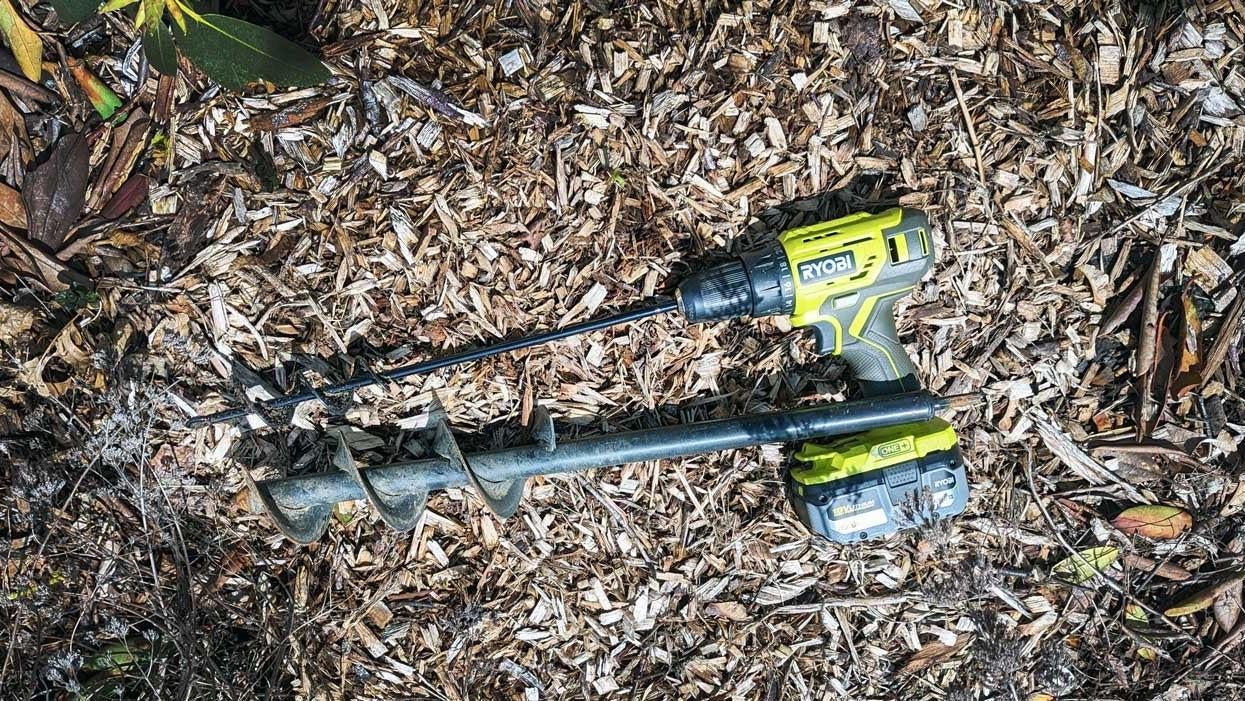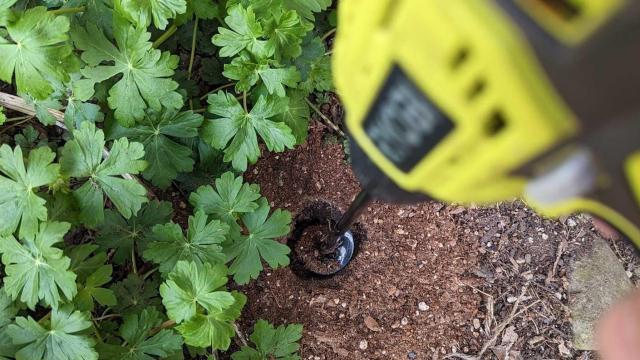The internet is losing its mind over using your drill in your garden. In short, you put a really long drill bit on and create holes to drop your bulbs into. But it gets even better: They make drill bits specifically for this — they’re called augers — and they’re even better than regular drill bit and you can do a lot more with them.
How to use your power drill to plant bulbs
Bulbs need to be planted 4-6 inches deep, close together. A shovel isn’t ideal because it has too large a footprint, but a drill will actually create lots of close together holes of the right depth. Augers come in various lengths and widths, and a three-inch auger is going to accommodate all the bulbs you have to plant. You just attach an auger to your power drill, aim it at the ground and start drilling. (You could make a corded drill work, but a cordless drill is a huge advantage here.) The design of the auger cuts through the ground much easier than a drill bit, loosening up the adjacent soil, which benefits your bulb or plants roots. You end up with a deep cylindrical hole, into which you drop your bulb.

When to use your power drill to break up the soil
Now is the right time to refresh your soil, because it is still holding all the moisture of the spring rain. Come summer, it’s going to dry out, and become much harder to work. An auger is perfect for doing some topsoil refreshing, particularly around plants, where a shovel would be a much bigger threat.

The real win here is planters and hanging baskets, which need to be refreshed every year, as opposed to beds, which benefit from not disturbing the soil. Those small containers need new compost, new fertiliser, and tend to get very compacted over the summer, so you need to break it all up, and an auger is a much easier way to do so than to dump it all out.
The best hack, though, is the long auger, which can go under your footpath or walkway to burrow a trench for pipes or wire. If you’ve ever had to do this, you know its very expensive to have done professionally, and it’s hard to DIY. You can use a hose spigot that is designed for this, but if you encounter anything under the pavement, the water is useless. The auger went through like butter, though, clearing a path in a few minutes.
In addition, if you’re putting in posts for a light, a fence, or a pergola, instead of getting a post-hole digger, you can use an auger. It’ll make short work of digging many narrow, deep holes. This means less cement is needed to fill the hole, which is important if you have to carry that cement from your car to the worksite.

Leave a Reply
You must be logged in to post a comment.